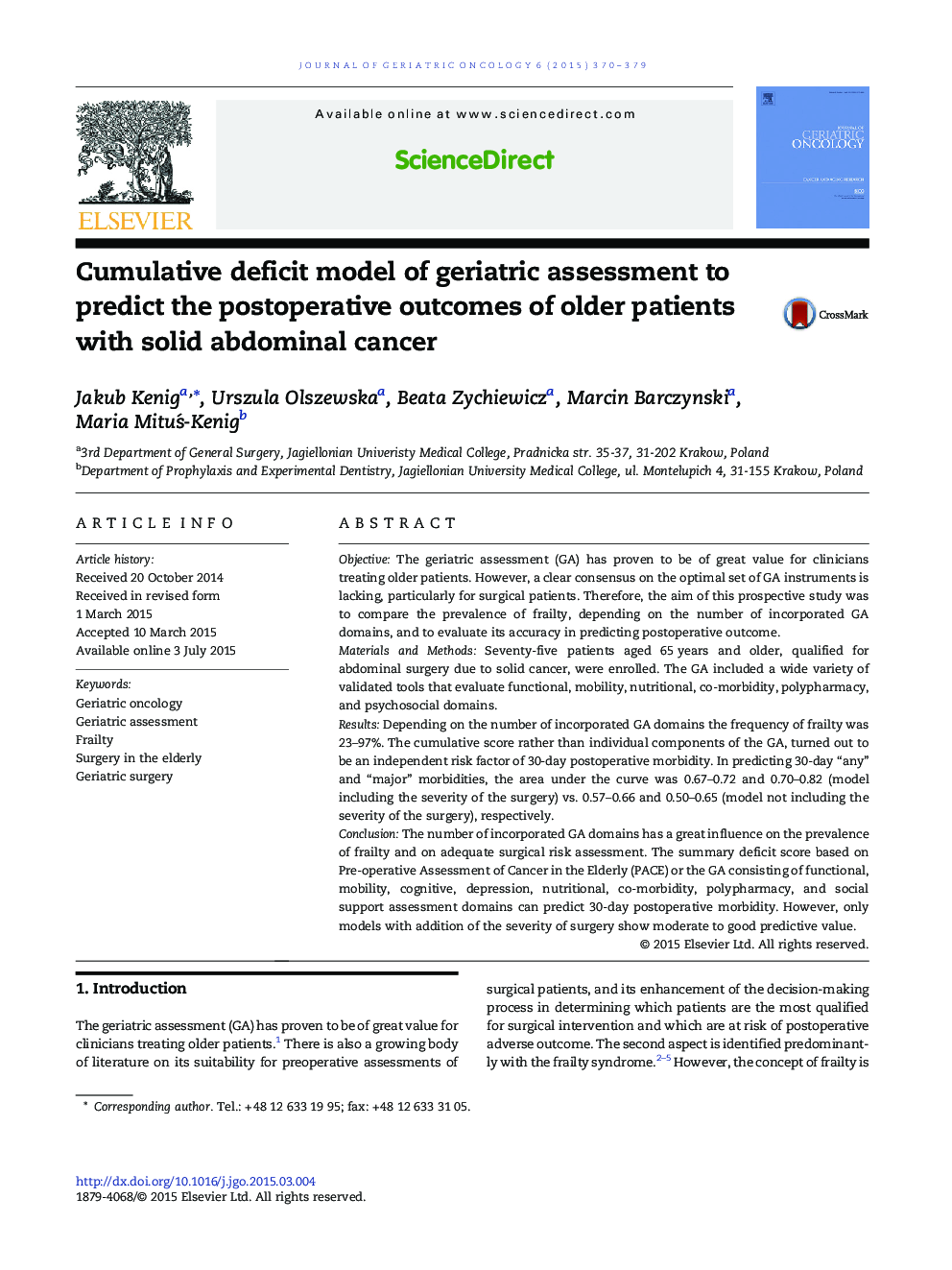| Article ID | Journal | Published Year | Pages | File Type |
|---|---|---|---|---|
| 1912225 | Journal of Geriatric Oncology | 2015 | 10 Pages |
ObjectiveThe geriatric assessment (GA) has proven to be of great value for clinicians treating older patients. However, a clear consensus on the optimal set of GA instruments is lacking, particularly for surgical patients. Therefore, the aim of this prospective study was to compare the prevalence of frailty, depending on the number of incorporated GA domains, and to evaluate its accuracy in predicting postoperative outcome.Materials and MethodsSeventy-five patients aged 65 years and older, qualified for abdominal surgery due to solid cancer, were enrolled. The GA included a wide variety of validated tools that evaluate functional, mobility, nutritional, co-morbidity, polypharmacy, and psychosocial domains.ResultsDepending on the number of incorporated GA domains the frequency of frailty was 23–97%. The cumulative score rather than individual components of the GA, turned out to be an independent risk factor of 30-day postoperative morbidity. In predicting 30-day “any” and “major” morbidities, the area under the curve was 0.67–0.72 and 0.70–0.82 (model including the severity of the surgery) vs. 0.57–0.66 and 0.50–0.65 (model not including the severity of the surgery), respectively.ConclusionThe number of incorporated GA domains has a great influence on the prevalence of frailty and on adequate surgical risk assessment. The summary deficit score based on Pre-operative Assessment of Cancer in the Elderly (PACE) or the GA consisting of functional, mobility, cognitive, depression, nutritional, co-morbidity, polypharmacy, and social support assessment domains can predict 30-day postoperative morbidity. However, only models with addition of the severity of surgery show moderate to good predictive value.
